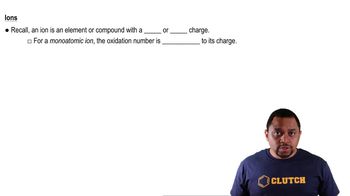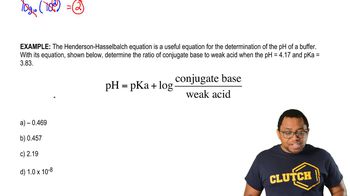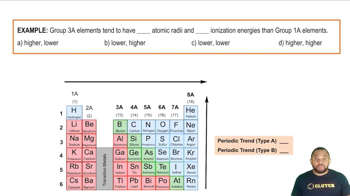Which of the following is the expected product of the reaction of K(s) and H2(g)? (i) KH(s), (ii) K2H(s), (iii) KH2(s), (iv) K2H2(s), or (v) K(s) and H2(g) will not react with one another.
Zinc in its 2+ oxidation state is an essential metal ion for life. Zn2+ is found bound to many proteins that are involved in biological processes, but unfortunately, Zn2+ is hard to detect by common chemical methods. Therefore, scientists interested in studying Zn2+-containing proteins frequently substitute Cd2+ for Zn2+, since Cd2+ is easier to detect. On the basis of the properties of the elements and ions discussed in this chapter and their positions on the periodic table, describe the pros and cons of using Cd2+ as a Zn2+ substitute. Proteins that speed up (catalyze) chemical reactions are called enzymes. Many enzymes are required for proper metabolic reactions in the body. One problem with using Cd2+ to replace Zn2+ in enzymes is that Cd2+ substitution can decrease or even eliminate enzymatic activity. Can you suggest a different metal ion that might replace Zn2+ in enzymes instead of Cd2+? Justify your answer.
 Verified step by step guidance
Verified step by step guidanceKey Concepts
Oxidation States and Metal Ions

Enzyme Function and Metal Ion Role

Periodic Table Trends and Element Properties

A historian discovers a nineteenth-century notebook in which some observations, dated 1822, were recorded on a substance thought to be a new element. Here are some of the data recorded in the notebook: 'Ductile, silver-white, metallic looking. Softer than lead. Unaffected by water. Stable in air. Melting point: 153 °C. Density: 7.3 g>cm3. Electrical conductivity: 20% that of copper. Hardness: About 1% as hard as iron. When 4.20 g of the unknown is heated in an excess of oxygen, 5.08 g of a white solid is formed. The solid could be sublimed by heating to over 800 °C.' (a) Using information in the text and the CRC Handbook of Chemistry and Physics, and making allowances for possible variations in numbers from current values, identify the element reported.
We will see in Chapter 12 that semiconductors are materials that conduct electricity better than nonmetals but not as well as metals. The only two elements in the periodic table that are technologically useful semiconductors are silicon and germanium. Integrated circuits in computer chips today are based on silicon. Compound semiconductors are also used in the electronics industry. Examples are gallium arsenide, GaAs; gallium phosphide, GaP; cadmium sulfide, CdS; and cadmium selenide, CdSe. (a) What is the relationship between the compound semiconductors' compositions and the positions of their elements on the periodic table relative to Si and Ge?
